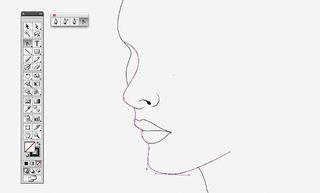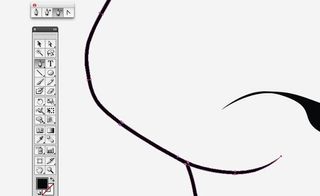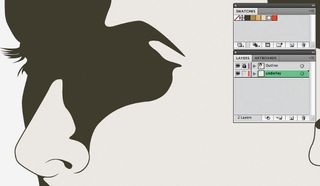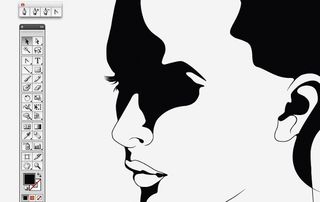Putting on a show
An exhibition can be rewarding and bring you a lot of positive press. Rob Carney asks successful creatives how to set up a private view
Whether in a high-profile London gallery or a coffee shop around the corner, an exhibition can do a lot for you and your career. For one, it takes your work out of the normal channels – the web, books and magazines – and catapults it into the real world, where passers-by can look at your work without preconceived ideas about what you do and where it ‘belongs’. It lifts your illustration, image-making or design work into the art world, immediately yielding you more respect as a creative professional. In addition, seeing your work in one place can help you evaluate your creative process, critiquing your current style and where you want to go next. And naturally, it can also bring you press attention and, off the back of that, more commissions.

So how do you go from a practising creative into an exhibited creative? Well, there’s certainly more to it than just finding the walls to hang your work on. But that’s a good start. “We look for designers who are genuinely distinctive and inventive or whose work has been influential,” says Graham McCallum, founder of Shoreditch’s Kemistry Gallery, an independent gallery that’s played host to some of the biggest names in contemporary design. Like many other independents it can show what it likes, as long as there’s a structure that will encourage repeat visits and variety. McCallum explains: “Decisions on what we show are based purely on what we like and what inspires us. The basic steps in running an exhibition are firstly to plan ahead so that the balance and mix of shows is right. The three categories for us are: ‘Design Legends’, ‘Future Design Legends’ and ‘Experimental’.”
Get them there – and keep them there
Online art listings are good for driving people to your show. And writing press releases to send out can’t hurt. But as Louise Chappell of Good Wives and Warriors says, “If all else fails, the offer of free booze is often enough to get a good crowd of friends to attend!” It’s actually a serious point – if you can get a drinks sponsor, it can really improve the turnout and keep your costs down. Asahi sponsor all of Kemistry Gallery’s private views, for example.
So, if you’re not being targetted by galleries, the advice McCallum gives is to scope the space, check out what the gallery’s remit is and make sure you’re right for them. As he emphasises: “Make sure your work fits with what the gallery is trying to do. We get approached a lot by people whose work is a million miles away from the gallery positioning.” In short, do your research.
Tom Bagshaw, an illustrator whose art recently graced LA’s Corey Helford Gallery, explains that, although it’s usually the case that a gallery approaches the artist or illustrator to put on an exhibition, there are alternatives for getting your work in a public space: “There are plenty of spaces that can be hired with a view to exhibiting your work that aren’t actually galleries,” he says. “But then you have to work out whether it’s going to be suitable in terms of facilities, lighting and actual location, and also work out all the costs. It’s usually not a cheap venture!”

On the subject of cost, hiring a venue can be expensive – a two-week hire in London can cost around £900, and that’s cheap – so if you’re looking at doing an exhibition this way, firstly try and call in favours from whoever you know and secondly, make sure you sell work. If you have the budget for a purely self-promo show, then great, but not many people do. At least if you cost your work you may be able to recoup the cost of the venue hire and maybe even make some money. As Bagshaw says: “You can of course put on an exhibition purely for the purposes of promoting your work and showing what you can do, but if you aren’t selling anything it’s just costing you money. If you want to do something like that it may be unlikely that a gallery will want to be involved as it’s their time, effort and money as well. And bear in mind that the norm for gallery work is a 50/50 cut of all sales.”
If you’re determined to find a space, a pop-up show in a non-gallery space is a good idea. Becky Bolton and Louise Chappell – aka Good Wives and Warriors – have some sound advice: “In the past, we have usually either approached artist-run spaces or local councils who often let out available shop fronts or empty buildings,” says Bolton. “Last September we organised an exhibition called An Emphatic Yes in London during Design Week. We had a contact through Camden Council and were able to get a good space in Bloomsbury for two weeks.” Chappell continues: “The first step is to write a proposal outlining exactly what you intend to do, timescale and so on. A good tip when writing a proposal for a space is to concentrate on what the exhibition is going to look like more than on the concept and background to the actual ideas involved. As with all proposal writing, we have experienced about as many rejections as successes but the trick is perseverance, which does eventually pay off!”
The next exhibition Good Wives and Warriors are involved in is called Glitch Fiction and is part of Paris Design Week. The duo’s first exhibition in France, it explores themes that Bolton describes as “at the edge of science fiction and reality, where a series of thought-provoking, participative and challenging design proposals will be revealed.” And it’s another important consideration – theme. You’re probably not well known enough to have a retrospective, so you will almost certainly need to come up with an intriguing, original theme that will get visitors interested.

Gemma Correll, the ADC Young Guns Award-winning illustrator, was invited by cult London jewellery company Tatty Devine to exhibit at its store. She came up with a unique theme for the show called Graham is a Weirdo: “I was pleased to have the opportunity to create and show completely personal work, just something a bit different from the commissioned work I do on a daily basis,” she begins. “The exhibition featured drawings of various pets, such as Dave the cat and Sharon the chicken, with a caption about each one. Graham is a Weirdo came from my drawing of the same name, featuring Graham the goldfish.” Correll continues: “I made a zine to accompany the exhibition, which featured all new work. If I do a solo show, I’m a fan of having at least a vague theme and some kind of narrative, so the zine went alongside that.”
Whatever your theme may be, make it interesting. Danny Sangra, a creative whose work spans across illustration, typography, fashion, film and more, titled his latest exhibition at The Aubin Gallery Leather Bitch. Why? Well, according to the gallery he named it ‘after a feverish food poisoning on his way out to Big Sur in which Danny recollects a vivid dream of leather jackets hanging on a white wall’. It just goes to prove that your theme doesn’t even need to make much sense to gain attention.
Once the exhibition is organised, there’s the small matter of getting people to come along. For a show at a gallery such as Kemistry, this isn’t really a problem: “Private views are always packed,” says McCallum, before explaining some of the gallery’s promotion methods. “We have built a loyal following so social networking and the blogosphere play an important role. Press and publicity helps, but most of all the exhibitions themselves bring in people.” Galleries will normally play an active role in promoting your show – after all, they want their cut of the sales and people through the door. Andy Smith, a Hastings-based illustrator, recently held a solo show at Bristol’s Soma gallery. A roaring success, he explains how the show was promoted: “Soma organised mail-outs, flyers and e-newsletters to all their contacts, and they have a large base of customers anyway who keep in touch with what they are up to,” he says. “I also emailed people but it was mostly promoted on the web by blogs and reviews of people who’ve been. I think word spreads fairly easily these days on blogs, Twitter and so on, and if you get the ball rolling it takes off.” Bagshaw concurs: “If you’re working with a curator of the gallery then they will be helping with the majority of the work – promotion, preparing the space, hanging the show, putting on drinks and food and so on. As the artist you will likely – with luck – just be required to produce a body of work, have it all framed up in a suitable manner and make sure it’s with the gallery in plenty of time for the show opening.”
The hanging of your exhibition, if not handled correctly, can ruin the look and feel of your show. Make sure your images are labelled up professionally and everything is straight. If you’re not confident, get some help. “It is difficult to plan how all the work will look together,” says Smith of the other challenges when hanging. “It’s not about individual pieces but how the whole room looks as a set of images.”
Get the Creative Bloq Newsletter
Daily design news, reviews, how-tos and more, as picked by the editors.

If your exhibition goes well, the rewards are huge. Not only do you get a mass of positive press and PR, but you get new fans and patrons. As Smith says, “I think a lot of the people who buy work at these kind of exhibitions are in the creative industry themselves, so if they have something up on their wall that in itself is a great piece of advertising. You never know who will see it.” Correll sums up what’s best about having an exhibition though – the fact that your work is brought to new audiences: “I think people like to see work in ‘real life’,” she smiles. “It’s nice to see an original drawing on a wall rather than on a computer screen, or even in a book. Having a show in a shop or public space means that you get visitors who would not ordinarily see your work and of course, having a show in London is great because of the sheer number of potential visitors. Even Graham Norton popped in to see my show!”
Smith agrees, adding another important benefit of exhibiting your work: “As an illustrator, I usually work on a picture and when it’s done it goes on a disc, is forgotten and I move on to the next thing. It’s not very often I actually stop and look at everything as a whole. Having a show forces you to do this and then you can see where you are at the moment and the new directions that you might want to take. It helps you focus.”

Thank you for reading 5 articles this month* Join now for unlimited access
Enjoy your first month for just £1 / $1 / €1
*Read 5 free articles per month without a subscription

Join now for unlimited access
Try first month for just £1 / $1 / €1
The Creative Bloq team is made up of a group of design fans, and has changed and evolved since Creative Bloq began back in 2012. The current website team consists of eight full-time members of staff: Editor Georgia Coggan, Deputy Editor Rosie Hilder, Ecommerce Editor Beren Neale, Senior News Editor Daniel Piper, Editor, Digital Art and 3D Ian Dean, Tech Reviews Editor Erlingur Einarsson, Ecommerce Writer Beth Nicholls and Staff Writer Natalie Fear, as well as a roster of freelancers from around the world. The ImagineFX magazine team also pitch in, ensuring that content from leading digital art publication ImagineFX is represented on Creative Bloq.
